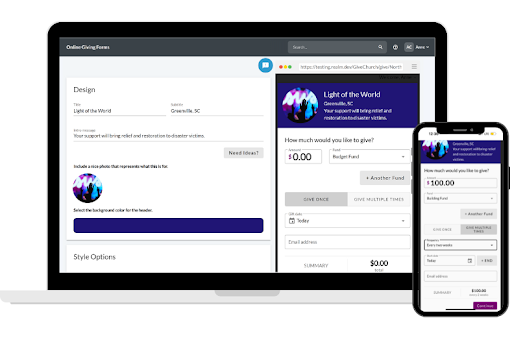I once had an experience with a donor who began by giving moderately toward a few of my projects. When he retired, he sold his business and realized he was entrusted with wealth beyond his imagination. He called me to say that he wanted to use this newfound wealth to make the organization I worked for his core project and leave a legacy for himself and his family. Based on his earliest gifts, it would have been easy to dismiss this kind of capacity. However, through the course of his relationship with me personally and his connection to the cause over the years, we saw an incredible outcome. A lot of trust had to be established before he could give the kind of gifts that have created such an impact.
In my book, What Have I Gotten Myself Into, I share that donor’s story to illustrate that we never know whom God is putting in our ministry’s path and we never know how God will use that person (and us) to fulfill a mission.
When I train representatives at a ministry or organization, I challenge them to think about the current state of their relationships with donors. Consider your church’s loyal givers. What do you know (or think you know!) about those donors’ potential giving level? What is your strategy to engage them in the mission of the church? How do you plan to move the relationships forward? What are the key points of intersection these people have with your church’s unique mission? From there, walk it forward, always with a long-term perspective in view.
In this blog series, we are dismantling common fundraising anxieties. Most of us were not trained to ask for money, so learning how to approach donors in a way that is authentic and grounded in your church’s mission is critical to long-term fundraising success. If you often find yourself working from a “transactional” mindset when it comes to fundraising, consider taking the next year to make a pivot to relationship-based fundraising. Driving for transactions is unfulfilling for you and your donor. With relationship-based fundraising, over the course of time, donors giving at a small fraction of their capacity will grow in their giving and in their excitement and volunteerism as well.
Sometimes, in our urgency (as a ministry on a tight budget with immediate needs!), our desperation to meet financial obligations causes us to move too quickly. We tackle our loyal givers with poorly thought-out emergency requests, or we fly through presentations and asks. When you build on a relational approach, you can build up donors— especially prospective major donors who are entering at a lower giving level to test the waters. If we think big and plan big, we’ll see donors rise to the opportunity to scale with your church and your project opportunities. In the next post of this series, we’ll remind you of the four-step cycle that assures your fundraising is relational, authentic and donor-centered.
Need advice about your church’s development plans? Our partnership with ACST means our expertise is available to you. If you’d like counsel about any aspect of donor relations or your church’s development plans, contact us, and we’ll be happy to talk with you.
Tim Smith
Tim has over 30 years of experience in Church, Non-Profit Administration, Management, and Fund Development. Serving as an Executive Pastor and Chief Development Officer in growing Churches and Non-Profit Organizations. He has provided a wide range of expertise and resources. Tim serves as the Founder and CEO of Non-Profit DNA. A boutique firm committed to helping nonprofits and churches. By building their capacity through fundraising, leadership, team building, staff recruiting, and coaching.




